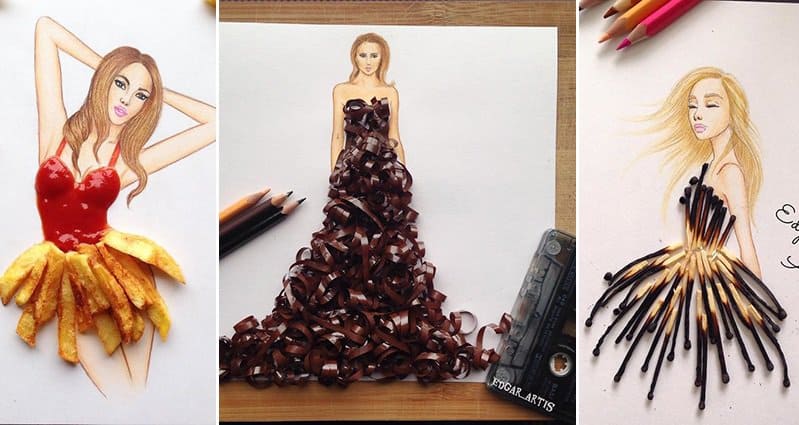

Because it is more translucent than the brown craft paper, it’s easier for tracing, while also being more durable than tissue or tracing paper. You can also use plotter paper for hand-sketched patterns. Similar to the paper used for blueprints, plotter paper is available from 36” wide to 72” wide, in a variety of roll lengths. Much like blueprints and engineering drawings, you’ll need a specific type of paper for this big printer.
BROWN SKETCH FASHION PAPER SOFTWARE
If you use CAD pattern software to design your products, you probably have a large plotter printer to go with it. You can also use it to preserve tissue patterns that you frequently use because it’s stiffer than other papers it’s also ideal for making patterns from existing garments.ĭo you ship your own products? Craft paper is also great for packaging and wrapping merchandise for shipment.

At 40# thickness, it’s slightly thinner than paper grocery bags and more flexible.Ĭraft paper is used in shops to underlay fabrics to ensure correct stitching, as well as creating patterns for your designs. Our dotted printer paper comes in 48” wide and 60” wide rolls, so your patterns will all fit, and you’ll rarely need more room to trace or retrace.īrown craft paper is useful for so many things in your home or shop, and it comes in widths from 48” to 66”, and in rolls of 800 feet (you can also buy smaller rolls of 60” wide in 10 yards or 30 feet). However, it’s not quite thick enough for making patterns. Pencil marks also erase easily from this paper, and it is easy to cut without tears or curling edges. This type of paper is slightly heavier than tissue paper, stronger than tracing paper, but thin enough to see through to trace lines. This brighter white paper contains small blue letters, numbers, or other dot markers at one-inch intervals, creating a grid for accurate pattern making.

It also works as a seam stabilizer and can be easily torn away when it’s no longer needed.ĭotted Or Alphabet Printer Paper For Retracing Patternsĭotted paper, also commonly known as marking paper, alphabet paper, or alphanumeric paper, is your best choice for tracing, retracing, altering, and marking patterns that need complex alterations. Knits are protected from picking, running, and other damage during the stitching process. It provides a slippery barrier that prevents sticking on the presser foot and throat plate while stitching, as well as stability for thinner fabrics like silk that tend to slide. Tissue paper also helps when you are working with particularly difficult fabrics, such as oilcloth and vinyl. Perhaps your first thought is that tissue paper is best for creating temporary or preliminary patterns, but when it comes to sewing, that is not the case at all. Read below to learn more about the different types of sewing pattern papers and what they are used for. However you design your products, the right sewing pattern paper is essential to layout, trace, draw, and transfer designs onto something usable.
BROWN SKETCH FASHION PAPER PROFESSIONAL
Professional designers need paper that is bigger, wider, less opaque, stronger, and suitable for tracing, marking, cutting, and revamping. This method comes in handy for the professional sewist when there is one pattern, and you need to make multiple copies. You can then make alterations on the traced versions for a custom sewing pattern, without altering or damaging the original. If you’re using a commercially printed pattern, you can trace them onto another type of sewing paper to keep them intact. But for serious designing and pattern making, you’ll need more than that. For small, one-off projects or for teaching someone about pattern making basics, these might be suitable options. Or you could use brown paper grocery bags, which you’ll also need to cut and tape together. Sure, you can use regular printer paper, for which you’ll need tape. It’s all in a day’s work when you’re designing and creating garments, bags, and other stitched textile items for your items or product lines, and perfecting the patterns you’ll use to make them. And maybe even going back to the drawing board. Part of that process involves creating a pattern to follow. Designs literally start on a drawing board and then follow a number of steps before it’s a wearable garment. Making your own stylish garments is enjoyable work, whether you are doing it for yourself or for the fashion industry.


 0 kommentar(er)
0 kommentar(er)
